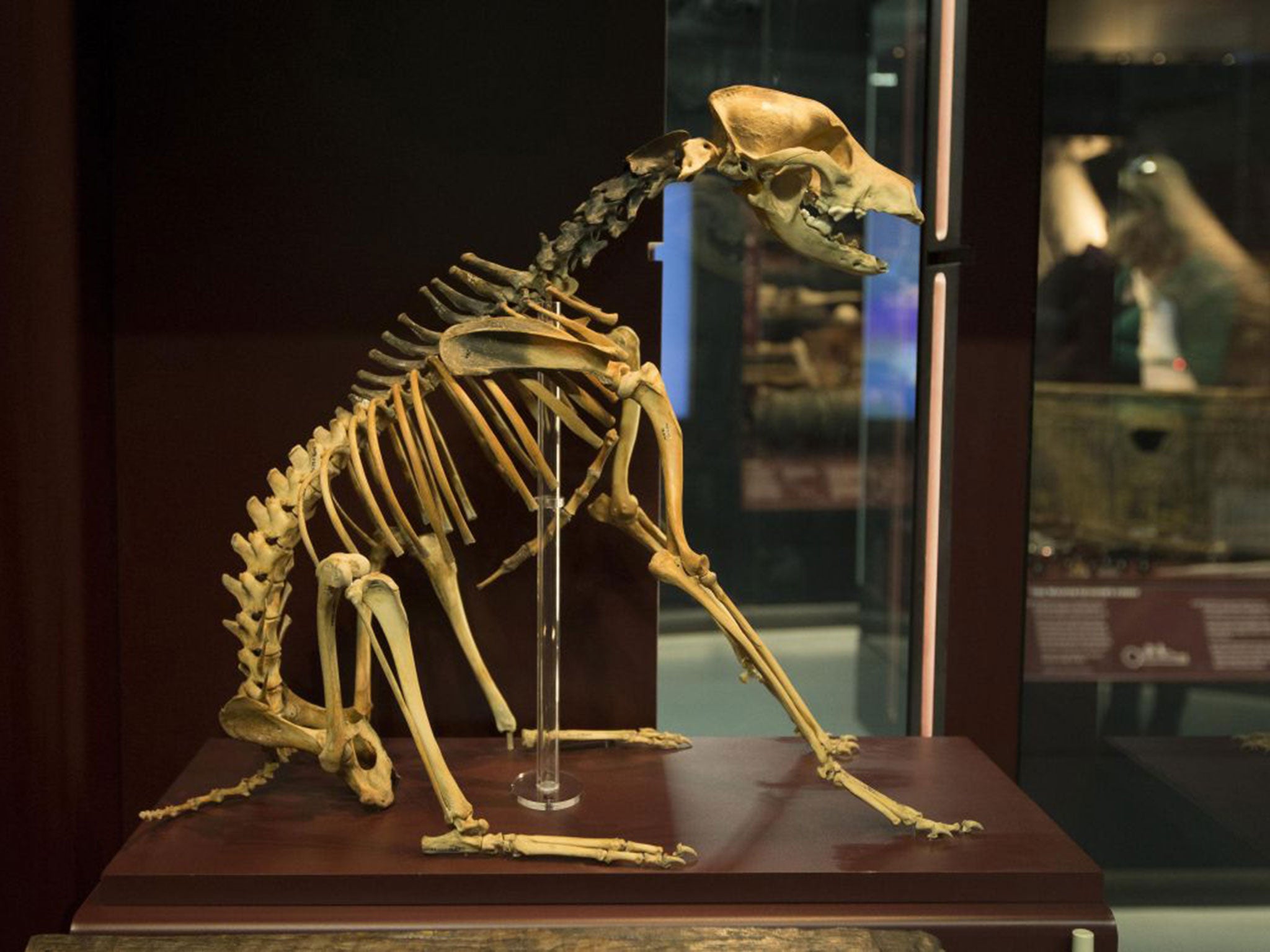Scientists prove ship's dog on the doomed Mary Rose was male
For nearly 500 years, Hatch was thought to be the only known female aboard when the flagship sank. But new DNA testing tells a different story

She was a scrappy sea mongrel who went down with her ship. Now nearly 500 years after Hatch the crossbreed drowned with the crew of the Mary Rose, it has emerged that the world's most famous sea dog, and the only known female aboard, was male.
Hatch's remains went on display four years ago at the Mary Rose Museum in Portsmouth, where some of the 19,000 objects from Henry VIII's ill-fated flagship are on show. She quickly became a popular attraction, but ongoing DNA testing of the crew has revealed the true sex of the unfortunate hound, which was named after divers discovered her remains near the hatch entrance to the Mary Rose's carpenter's cabin.
The well-preserved skeleton of the mongrel was excavated from the Tudor ship after it was brought to the surface of the Solent in 1982. Without DNA testing available, experts had to arrange the dog's bones by hand, determining that Hatch was a bitch from characteristics and size of the bones.

However, new DNA test results published in Forensic Science International journal this month revealed more accurate details about the dog. Maritime archaeologist Alex Hildred, who co-authored the new report, said: "Genomic DNA extraction is something that we have only recently been able to use in amplifying ancient DNA. It can give us the sex, colourings, coat and regressive genes and confirm that Hatch is in fact a boy dog."
The testing also suggests Hatch shared many genetic characteristic with the modern breed of Jack Russell. Hatch was most likely a cross-breed which shared some characteristics with a whippet, but with a long and curly coat.
In spite of Hatch's initial gender confusion, his skeletal structure is in good condition; to carry out the testing a tooth was taken and copied by dental students at King's College. The original was used by Dr Hildred's team for DNA testing, in what has been described as a "great leap forward" for forensic study and understanding the development of dog breeds.
She said: "We're trying to do the same with genomic DNA for human remains, allowing us to determine the same things – hair colour, eye colour, area of birth." Hatch was employed on board as a ratter at a time when sailors believed cats brought bad luck. Tudor sailors also believed that female crew were an omen of bad luck.

Sally Tyrrell of the Mary Rose Museum said: "Study of the 179 crew recovered from the ship confirms that they were all male, suggesting the historic preference for an all-male crew on board an active warship can be taken back to the 16th century – including the ship's dog."
Regardless of Hatch's gender, the poor animal had a tough life; earlier analysis of his bones suggests he spent most of his life on the ship.
Join our commenting forum
Join thought-provoking conversations, follow other Independent readers and see their replies
Comments
Bookmark popover
Removed from bookmarks